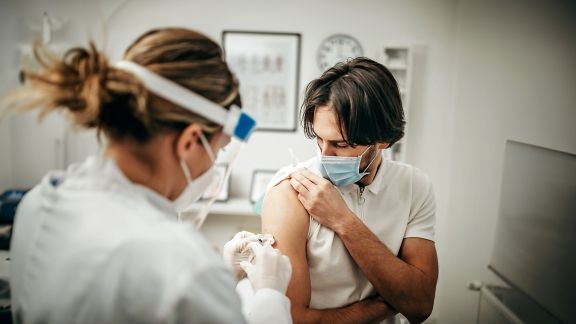Growing Up with Guns Study

Problem
We do not have a national picture of how gun violence is affecting youth and young adults in the U.S.
In 2018 in the U.S., 8,222 youth and young adults ages 10 to 30 were victims of homicide, of whom 87 percent were killed with a firearm. In the same year, 11,782 died by suicide, of whom 46 percent used a firearm. These statistics, in addition to the sustained increase in mass shootings, has renewed the public’s interest in preventing firearm violence.
While the literature has identified a range risk factors for firearm violence, research gaps remain.
- Studies have not compared how risk factors vary across youth and young adult developmental periods.
- Research on protective factors is very limited.
- Research is scant comparing how different forms of firearm violence (direct firearm violence and witnessing) co-relate.
- We know little about how youth and young adults respond (“bystander behavior”) when faced with knowledge about someone’s potential role in firearm violence.
- There has been an absence of nationally representative samples following respondents over time.
Solution
NORC and the University of New Hampshire (UNH) are fielding a nationally representative longitudinal survey of youth and young adults’ exposure to firearm violence.
To address gaps in the research, NORC and UNH are fielding a nationally representative longitudinal survey of youth and young adults on their exposure to firearm violence. Our study will provide data to better identify youth and young adults at risk for firearm violence, including factors from individual, relational, school/work, and community contexts that may amplify risk and lead to different types of firearm violence.
We will investigate how these domains function in different developmental stages, and look at perpetration and victimization to account for the well-documented victim-offender overlap. We will also explore how protective factors reduce the likelihood of different forms of firearm violence. We’ve structured the work as a national, 3-wave longitudinal survey using NORC’s AmeriSpeak panel of 2,750 youth and young adults ages 10-34.
Specific aims include:
- Provide population-based estimates of direct and indirect firearm violence.
- Identify the individual, relational, school/workplace, and community-level risk and protective factors associated with indirect and direct firearm violence.
- Understand the factors under which youth and young adults engage in bystander behavior to help prevent firearm violence.
Result
Our research findings will inform policies and programs meant to protect youth from gun violence.
The findings from this longitudinal work will provide an empirical understanding of the effects over time of gun violence or the risk and perception of it on American youth. These data will be a valuable resource for policymakers, service providers, the justice system, and other researchers to create a safer environment for American youth.
Related Tags
Project Leads
-
Bruce Taylor
Senior FellowPrincipal Investigator -
Elizabeth Mumford
Senior FellowCo-Investigator -
Weiwei Liu
Principal Research ScientistCo-Investigator -
Caroline Lancaster
Research MethodologistCo-Investigator










